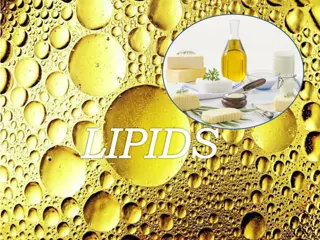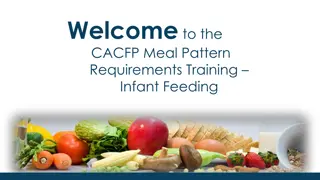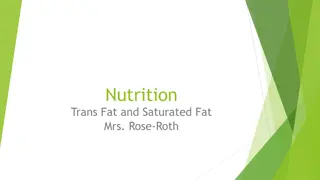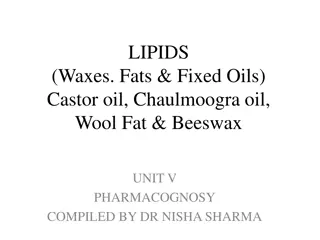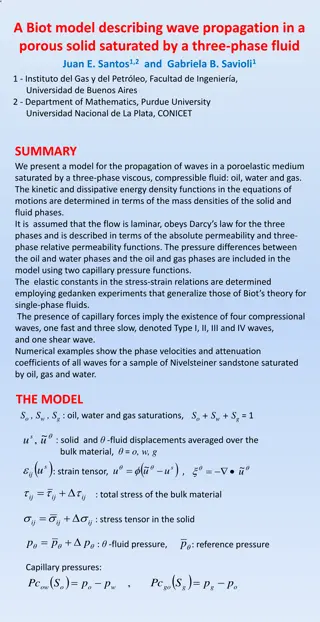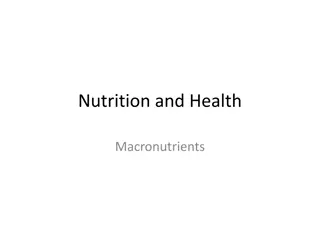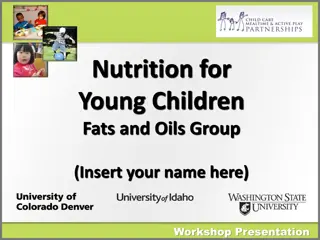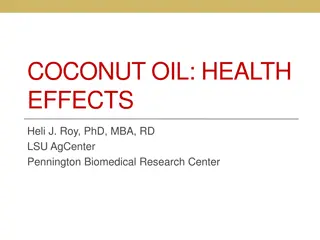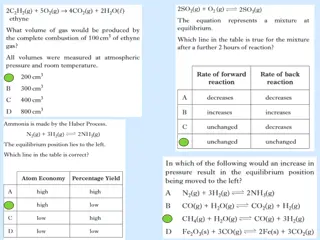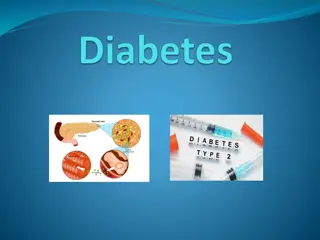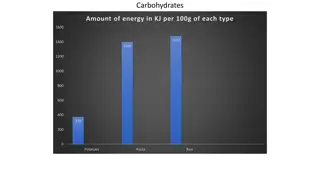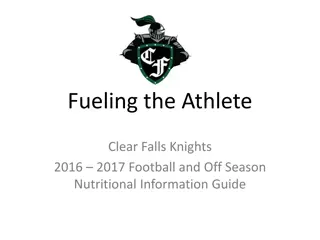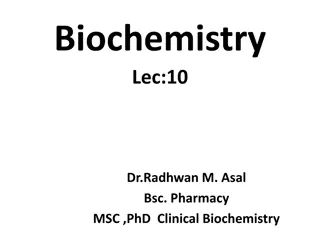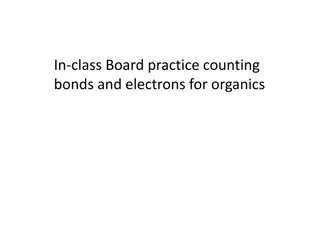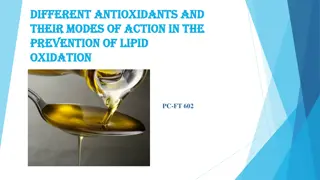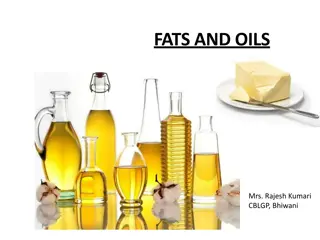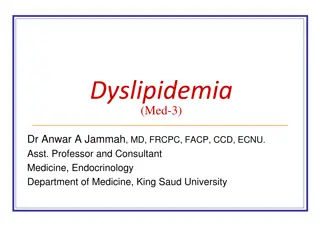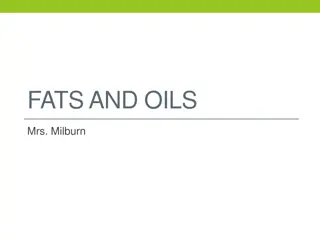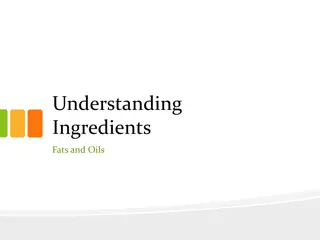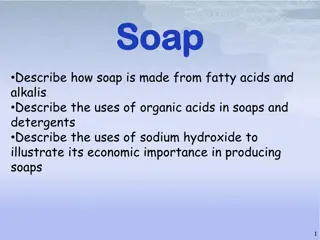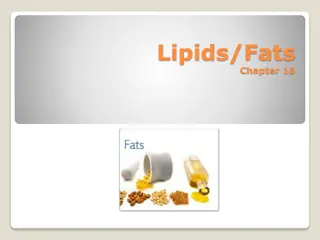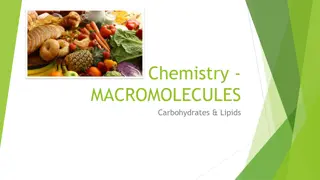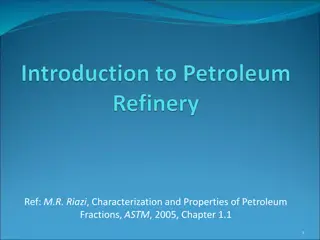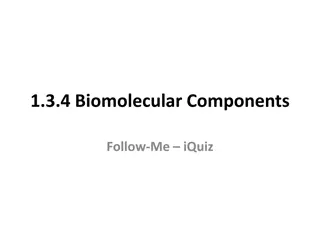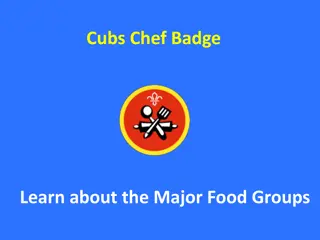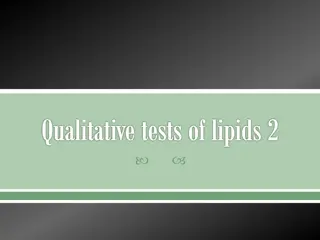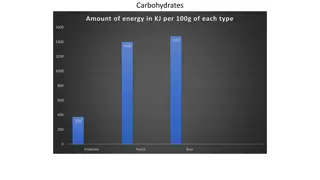Top 10 Projects in Noida
High demand and great investment opportunities characterize the top ten most popular residential projects in Noida for 2024. As Delhi gets saturated, people are also moving here in search of better deals and larger volumes for less money.
0 views • 3 slides
U.S. Cold Drawn Seamless Steel Pipes Market
The increasing demand for seamless pipes in the oil & gas sector is the key factor driving the growth of the U.S. cold drawn seamless steel pipes market. However, the volatile raw material prices and lower demand in saturated markets are expected to restrain the growth of this market.
0 views • 3 slides
NSLP 101: An Overview of the National School Lunch Program
The National School Lunch Program (NSLP) is a federally funded program providing nutritionally balanced, low-cost or free lunches to school children each school day. School Food Authorities (SFAs) ensure meals meet federal requirements without discrimination. Guidelines include offering meal compone
9 views • 73 slides
Buy Cheddar Cheese Orange Powder (500 Gm) with Rich and Tangy Flavours
Mkl & Pkd. By\n\nCheddar cheese contains a high concentration of essential nutrients, in particular high quality protein and calcium, which are great for your health. It is a good source of calcium and protein, but it can also be high in saturated fats and sodium.\n\nGourmet Delight: Cheddar Cheese
2 views • 3 slides
Understanding Lipids: Properties, Functions, and Types
Lipids are a diverse group of organic compounds that include fats, oils, hormones, and components of cell membranes. They are vital for energy storage, structural roles in cell membranes, hormone synthesis, and organ protection. Lipids can be classified into different types such as waxes, triglyceri
11 views • 14 slides
CACFP Infant Feeding Meal Pattern Requirements Training Overview
The training material covers the Child and Adult Meal Pattern Requirements, emphasizing a wider variety of protein options, more fruits and vegetables, whole grains, and less added sugar and saturated fat. It details the Infant Meal Pattern Requirements, encouraging breastfeeding and promoting devel
2 views • 58 slides
Understanding Solutions and Precipitation Reactions
Solutions are classified as saturated, unsaturated, or supersaturated based on the concentration of solute in the solvent. Solubility plays a critical role in determining the amount of solute that can be dissolved in a solvent at a given temperature. Reactions yielding products of limited solubility
6 views • 10 slides
Experience the Joy of Lucknow Matrimony: Start Your Journey
Lucknow, the city of love and romance, is a popular destination for those seeking a lifelong partner. The city offers a variety of options for matrimony, from traditional ceremonies to modern court marriages. Here, we will explore the different aspects of matrimony in Lucknow, highlighting the vario
2 views • 1 slides
Understanding Digestion and Absorption in the Gastrointestinal Tract
Digestion and absorption in the gastrointestinal tract are crucial processes for breaking down carbohydrates, fats, and proteins into smaller compounds that can be absorbed by the body. Carbohydrates undergo hydrolysis to convert into monosaccharides, fats are broken down from triglycerides, and pro
1 views • 22 slides
Understanding Trans Fat and Saturated Fat in Nutrition
Trans fats are unsaturated fats that can have negative health effects, found in baked goods, fried foods, and more. Saturated fats, mostly found in animal products, may increase the risk of heart disease. Learn how trans fats affect health and which foods contain them.
0 views • 11 slides
Understanding Weather: Key Concepts and Factors Explained
Weather is the combination of various elements such as temperature, wind, humidity, and more. Wind is the movement of air, temperature is the measure of energy, and relative humidity indicates the amount of moisture in the air compared to its capacity. Dew point is the temperature at which air becom
0 views • 21 slides
The Digestive Journey: From Skittles in the Mouth to Nutrient Absorption in the Intestine
The process begins with chewing skittles in the mouth, where salivary amylase breaks down sugar. The bolus then travels down the esophagus via peristalsis into the stomach, further broken down by gastric juice. The pancreas releases enzymes like amylase and lipase to digest sugars and fats. Bile pro
2 views • 15 slides
Understanding Lipids: Waxes, Fats, and Fixed Oils
Lipids are organic compounds like waxes, fats, and fixed oils found in plants and animals. Fixed oils are reserve food materials, while fats are solid at higher temperatures. These substances are esters of glycerol and fatty acids, with various components giving them unique properties and flavors. C
0 views • 20 slides
Understanding Lipids: Importance, Digestion, and Absorption
Professor Shraddha Singh's lecture series delves into the significance of lipids, the types of lipids, and the role of bile in digestion. Learn about saturated vs. unsaturated fatty acids, common fatty acids found in lipids, lipid structures, and properties. Explore the diverse types of fats we cons
2 views • 32 slides
Model for Wave Propagation in Poroelastic Medium Saturated by Three-Phase Fluid
We introduce a model describing wave propagation in a porous solid saturated by a three-phase fluid (oil, water, and gas). The model considers kinetic and dissipative energy density functions, laminar flow obeying Darcy's law, and capillary pressure functions. Elastic constants are determined using
1 views • 4 slides
Understanding Macronutrients: Carbohydrates, Sugar, Proteins, Fats
Explore the essential macronutrients including carbohydrates, sugar, proteins, and fats. Learn about their functions, types, food sources, and impact on health. Understand the role of sugar in energy provision and potential health risks. Discover the importance of starch as a common carbohydrate in
0 views • 59 slides
Understanding the Importance of Fats and Oils in Young Children's Nutrition
This workshop presentation provides trainers with detailed information on the fats and oils group, emphasizing the key nutrients, benefits to the body, recommended intake, and types of fats. It educates on the necessity of fat in children's diets, highlighting how fats contribute to overall well-bei
1 views • 17 slides
Understanding the Health Effects of Coconut Oil
Coconut oil, derived from mature coconuts, is rich in saturated fats and widely used in food, medicine, and industry. Fatty acids play crucial roles in human health, with different types impacting metabolism differently. Coconut oil's unique fatty acid composition sets it apart from oils like corn o
0 views • 18 slides
Understanding Fats and Oils: Properties and Formation
Learn about the properties of fats and oils, including their formation through a condensation reaction of glycerol with fatty acids. Explore the role of fats in the diet, different types of natural fats and oils, and the chemical composition of triglycerides. Discover the significance of fatty acids
0 views • 17 slides
Understanding Diabetes Mellitus and Dental Plaque
Diabetes mellitus is an endocrine disorder characterized by high blood glucose levels due to insufficient insulin production or ineffectiveness. Type 1 diabetes is insulin-dependent and typically develops in childhood, while Type 2 diabetes is non-insulin dependent and often seen in overweight adult
0 views • 13 slides
Nutritional Comparison of Carbohydrates, Proteins, Fats, and Vegetables
This infographic presents the energy content in kilojoules (KJ) per 100g of different food types, including carbohydrates (potatoes, pasta, rice), proteins (shrimp, lamb, bacon), fats (olive oil, avocado, peanut butter), and vegetables (broccoli, red peppers, carrot). The data depicts the varying en
0 views • 5 slides
Essential Nutrition Guide for Athletes: Fueling the Clear Falls Knights
Understand the importance of sports nutrition for athletes, focusing on carbohydrates, protein, and fats. Learn about the best food choices to enhance performance, hydration, recovery, and body composition changes while preventing fatigue. Explore detailed information on carbohydrates, including typ
0 views • 28 slides
Understanding Lipid Biochemistry: A Comprehensive Overview
Lipids are a diverse group of compounds crucial for various biological functions. They include fats, oils, steroids, and waxes with unique properties essential for energy storage, insulation, and nerve function. Knowledge of lipid biochemistry is pivotal in understanding areas like obesity, diabetes
0 views • 38 slides
Understanding Bonds and Electrons in Organic Compounds
Explore the world of organic chemistry by delving into the concepts of bonds, electrons, and their roles in determining properties of organic compounds. Discover why saturated fats are considered unhealthy, learn about bond energies, lengths, and orders, and unravel the mysteries of organic compound
0 views • 13 slides
Understanding Antioxidants and Their Role in Preventing Lipid Oxidation
Lipid oxidation is a crucial chemical process affecting the quality of fats and oils, leading to off-flavors and toxicity. Antioxidants play a vital role in delaying this oxidation process by scavenging free radicals through mechanisms like free radical scavenging. They help prolong the shelf life a
0 views • 12 slides
Understanding Different Types and Sources of Fats and Oils
Edible fats and oils come from three main sources - vegetable, animal, and fish. Vegetable oils are derived from plants primarily in tropical and sub-tropical regions, such as coconut palm, olive tree, groundnut or peanut plant, and soya bean. Animal fats are also a source of fats and oils. Each sou
0 views • 44 slides
Understanding Dyslipidemia and Lipid Transport in Atherosclerosis
Dyslipidemia is characterized by abnormal levels of lipids in the blood, leading to atherosclerosis. Lipid transport mechanisms play a crucial role in the formation and progression of atheromas in artery walls. Chylomicrons carry fats from the intestine to the liver, where they are processed into LD
0 views • 54 slides
Understanding Fats and Oils: Functions, Sources, and Benefits
Fats and oils play vital roles in the body, providing energy, insulation, protection, and promoting healthy skin. They are essential nutrients that offer 9 calories per gram and come from various plant and fish sources. Fat-soluble vitamins A, D, E, and K can only dissolve in fat, emphasizing the im
0 views • 30 slides
Understanding Fats and Oils: Types, Structures, and Nutritional Value
Explore the types of fats and oils used in cooking, including animal fats and plant oils. Learn about the nutritive value, storage options, and cooking uses of fats and oils. Discover categories like rendered fat and hydrogenated oil, and understand their impact on health. Dive into the world of fat
0 views • 32 slides
Chemistry of Soaps and Detergents Evolution and Formation
Soaps and detergents play a vital role in human comfort, cleanliness, and industrial applications. This article delves into the chemistry involved in the formation of soaps, highlighting the compounds and processes. It explores the differences between soaps and detergents, detailing their origins an
0 views • 38 slides
Understanding Soap Making and Uses of Sodium Hydroxide
Soap, an ancient detergent made from fatty acids and alkalis like sodium hydroxide, has been utilized for over 3000 years. Fats and oils are essential raw materials for soap production, and organic acids play a role in creating esters. Sodium hydroxide, a key component in soap making, showcases its
0 views • 9 slides
Understanding Humidity and Dew Point in Atmospheric Water Measurement
Relative humidity measures the amount of water vapor in the air compared to its capacity, influenced by temperature. Saturated air forms clouds at 100% humidity. Dew point is the temperature at which air becomes saturated, leading to condensation and cloud formation. By comparing air temperature to
0 views • 12 slides
Understanding Lipids and Fats in Nutrition
Lipids are essential compounds found in every living cell, categorized into triglycerides, sterols, and phospholipids. Triglycerides play a vital role in absorbing and transporting vitamins, energy storage, and cushioning organs. Understanding the difference between saturated and unsaturated fats is
0 views • 16 slides
Understanding Carbohydrates and Lipids in Macromolecules
Explore the world of carbohydrates and lipids, essential macromolecules in chemistry. Carbohydrates provide energy and are found in foods like fruits, bread, and pasta, while lipids like fats play a crucial role in storing excess energy. Discover the types of carbohydrates, digestion processes, and
0 views • 16 slides
Entomophagy and the Nutritional Benefits of Eating Grasshoppers
The International Conference on Food Technology delved into the practice of entomophagy, focusing on the consumption of grasshoppers. With over 80 edible species of grasshoppers globally, they provide essential nutrients such as proteins, fats, vitamins, and minerals. Grasshoppers are known for thei
0 views • 11 slides
Understanding Petroleum Hydrocarbons and Their Properties
Petroleum is a complex mixture of hydrocarbons, including paraffins, olefins, naphthenes, and aromatics. Paraffins are fully saturated and stable, olefins are unsaturated with double bonds, naphthenes are cyclic saturated hydrocarbons, and aromatics are cyclic unsaturated hydrocarbons containing ben
0 views • 19 slides
Understanding the Composition of Fats in Biomolecular Components
This quiz explores the differences in chemical composition between fats, highlighting factors such as fatty acids, presence of nitrogen groups, and the role of phosphate groups. It also touches on the characteristics of lipids, testing methods, and the distinction between lipids and amino acids. The
0 views • 50 slides
Learning About Food Groups with Cubs Chef Badge
Explore the major food groups with Cubs Chef Badge and the Eatwell Guide. Discover the importance of carbohydrates, fruits, vegetables, low fats, dairy, proteins, and the impact of foods high in fats, sugars, and salt on our health. Get tips on maintaining a balanced diet, preparing Rama's Best Ever
0 views • 9 slides
Qualitative Tests of Lipids and Derived Lipids Overview
Qualitative tests of lipids distinguish between oil, neutral fat, saturated fatty acids, and unsaturated fatty acids using methods like the copper acetate test. Derived lipids include substances like cholesterol and fat-soluble vitamins that are either soluble in lipids or derived from lipids throug
0 views • 14 slides
Nutritional Comparison of Carbohydrates, Proteins, Fats, and Vegetables per 100g
Explore the energy content in KJ per 100g of various food types such as potatoes, shrimp, olive oil, broccoli, and more. Compare carbohydrates, proteins, fats, and vegetables to make informed dietary choices. Visual representations included for easy understanding.
0 views • 5 slides




